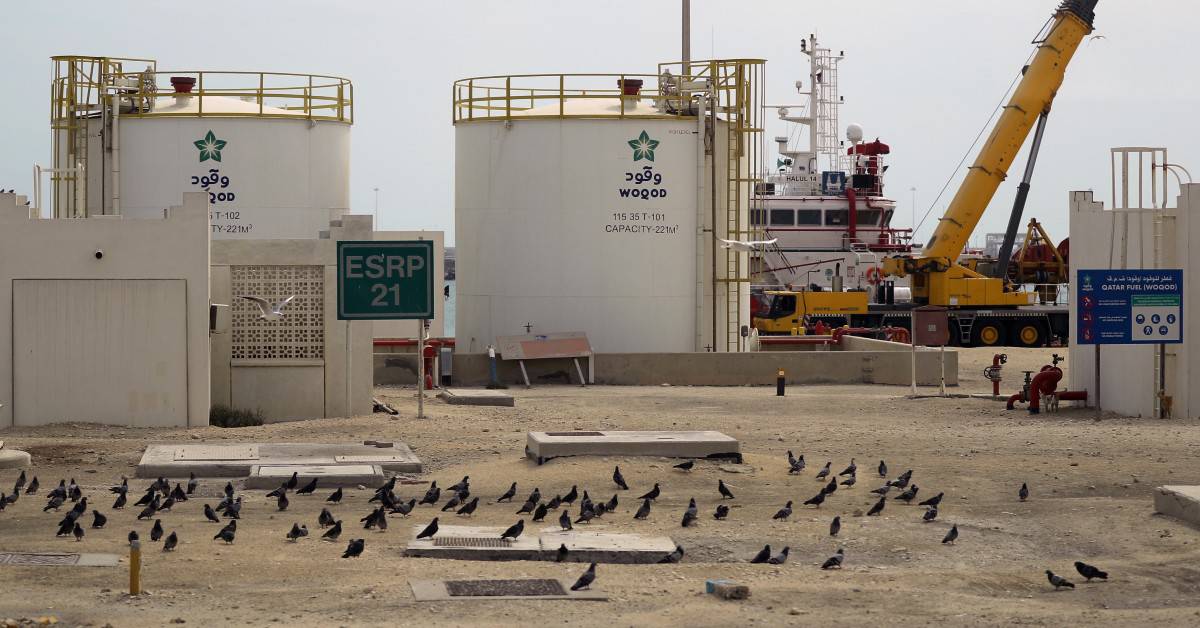Global natural gas prices reached record highs during 2022 as a result of the ongoing Russia-Ukraine war that continues to have severe ramifications on global energy prices and China’s strict controls to battle the Covid-19 pandemic.
A new report by Kamco Investment, which highlighted the developments in the global natural gas market during 2022, said the GCC region has been one of the key regions eyed by the EU countries for LNG supplies in their bid to diversify away from Russian energy.
Leading natural gas consumer countries such as Germany undertook diplomatic and deal making offensive in the GCC to secure LNG supplies for their countries in both the near and distant future during the year.
There have been some notable successes of such deals during 2022. The German utility company RWE has declared that it will receive the first LNG shipment of 137,000 cubic meters from Abu Dhabi National Oil Company (ADNOC) by the end of 2022.
In November-2022, Qatar and China signed one of the largest ever LNG deals inking a USD 60 Bn LNG supply deal for 27 years.
The deal entails state owned Qatar Energy to supply China Petroleum and Chemical Corporation with four million tons of LNG for 27 years starting from 2026.
Qatar has signed major agreements to expand its natural gas production by 70 percent in 2027 with major oil and gas companies in 2022.
Moreover, Qatar Energy and Total Energies have inked around five separate major partnerships worth up to USD 29 Bn for the construction and expansion of the North Field gas expansion.
The North Field expansion project comprises of two distinct parts, namely Northfield East and Northfield South project. The Northfield East project is intended to increase Qatar’s LNG production capacity from 77 to 110 million tons per year. Comparatively, the North Field South Projects is planned to further increase Qatar’s LNG production capacity from 110 to 126 million tons per year.
Globally, China which has now relaxed its Covid-19 containment measures, is expected to have higher natural gas demand in 2023 than it had in 2022.
According to S&P Global, China is forecasted to register a 1.4 percent y-o-y natural gas demand decline in 2022 to reach 363.1 billion cubic meters, its first ever natural gas demand decline as compared to its demand of 369 billion cubic meters in 2021.
On the European front, the EU/US response to the Russia-Ukraine conflict which included putting sanctions on Russian energy exports including natural gas exports to EU countries, has severely disrupted the EU as well as global gas prices.
According to ACER, natural gas consumption comprises 21.5 percent of the EU’s total primary energy consumption and around 40 percent of the bloc’s households are connected to a gas network.
The European Union states import roughly 80 percent of their total gas needs of which roughly 50 percent of the supplies comes from Russia. The EU has had a tough year in finding replacement for Russian natural gas as they seek to isolate and punish Russia for the Russia-Ukraine conflict.
The pivot to forego cheap natural gas from Russia and to import higher priced LNG from distant locations such as the USA and Qatar has driven global natural gas demand as well as global natural gas prices upwards all throughout 2022.
According to the World Bank, US natural gas prices for Dec-2022 increased by 47.4 percent y-o-y to reach USD 5.5/MMBtu. In context, US natural gas prices reached an all-time monthly average high of USD 8.79/MMBtu in August-2022 as soaring global LNG prices supported demand for US LNG exports that resulted in higher prices.
However, European natural gas prices for December-2022 declined by 5.2 percent y-o-y ending the year with an average of USD 36/MMBtu, while monthly Japanese LNG price for December-2022 witnessed 27.1 percent y-o-y rise at USD 19.47/MMBtu. In its quest to wean itself from cheap Russian natural gas, some EU states have already started building LNG regasification terminals during the year. Germany, which receives around 40 percent of its natural gas from Russia making it one of the heavily impacted countries in the repercussions of the Russia-Ukraine conflict is currently building five new FSRU’s (floating storage and regasification units). Overall, according to S&P Global, currently there are 25 new FSRU’s which are planned to be installed across the EU in the near future.








